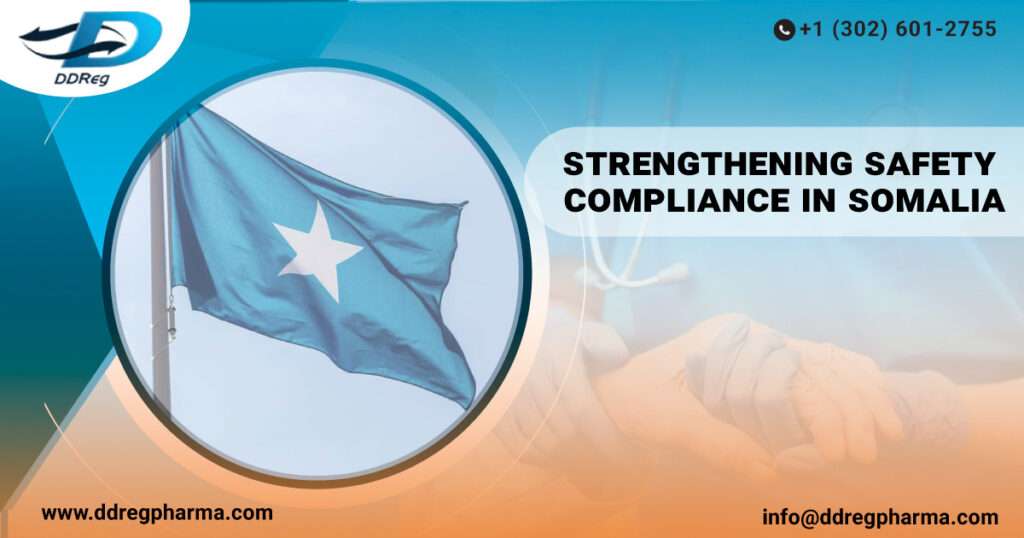The National Medicine Regulatory Authority (NMRA) of the Ministry of Health regulates and controls regulatory & safety related operations for pharmaceuticals in Somalia. It is responsible for facilitating the availability and accessibility of safe and effective medicines to the Somalian population. More recently, the Somalian NMRA issued their very first Somali Pharmacovigilance Guideline with the aim to strengthen and improve pharmacovigilance practices & patient safety in the country. It delineates requirements, processes, roles & responsibilities, and pharmacovigilance activities for various stakeholders including but not limited to marketing authorization holders (MAHs), research institutes, patients/consumers, healthcare providers etc.
This guideline was developed in accordance with the standards and regulations of the International Conference for Harmonization (ICH), United States Food and Drugs Administration (US FDA), World Health Organization (WHO), Uppsala Monitoring Center (UMC), the European Medicines Agency (EMA), and National Agency for the Safety of Medicines and Health Products (ANSM) of France.
Pharmacovigilance Legal Framework of Somalia
The National Medicine Policy endorsed the existing pharmacovigilance (PV) legal framework in 2014. Subsequent decrees were established in 2016, 2020, and 2023 that enforced the policy further to ensure product safety in Somalia. The PV framework communicates the roles & procedures of the Somalian Pharmacovigilance System (SPVS), how to practically identify adverse drug reactions (ADRs) & adverse events following immunization (AEFIs), and how to report these to the SPVS.
Somalia Pharmacovigilance System
The SPVS constitutes National PV section under the interim NMRA, State Pharmacovigilance Focal Points, and National PV Committee. The minimum requirements to establish a PV system in Somalia includes a proper office space, information technology (IT) systems, and access to publications that must meet the overall objective of PV. Additionally, there should be at least 1 pharmacist and 1 medical doctor that has been trained in PV knowledge. It is important to note that all stakeholders who are involved in PV in Somalia (local and foreign) must have a quality system in place.
The foundation of the SPVS is built on reporting adverse events by stakeholders such as healthcare professionals, manufacturers, and citizens. It follows the WHO Program for International Drug Monitoring (WHO-PIDM) and is based on a decentralized reporting system for citizens and healthcare professionals, and centralized reporting for manufacturers.
The roles, responsibilities, and PV processes for various stakeholders involved in pharmacovigilance in Somalia are outlined in section 3 of the guidelines. They provide details for the Federal State Members, the National Pharmacovigilance Committee, Public Programs, Health Facilities, Marketing Authorization Holders, Manufacturers, Local Technical Representatives, Academia, Research Institutes, Development Partners, Ministry of Health and Human Services, Patients, Health Care Professionals, and Consumers, Collaboration with Uppsala Monitoring Center (UMC).
Conclusion
The Somali Pharmacovigilance Guideline is a comprehensive and detailed guidance document based on applicable and globally accepted guidelines & standards. This is a momentous step in establishing a robust pharmacovigilance system in Somalia that would support compliance and patient safety.
DDReg has supported its customers with end-to-end pharmacovigilance services for their target markets. In Africa, DDReg has covered all major regions within the African continent to support its Life Sciences customers with tailored compliance solutions. Visit our Resource page to know more about our team’s takes on key topics within the industry: DDReg Pharma- Resource Page.

